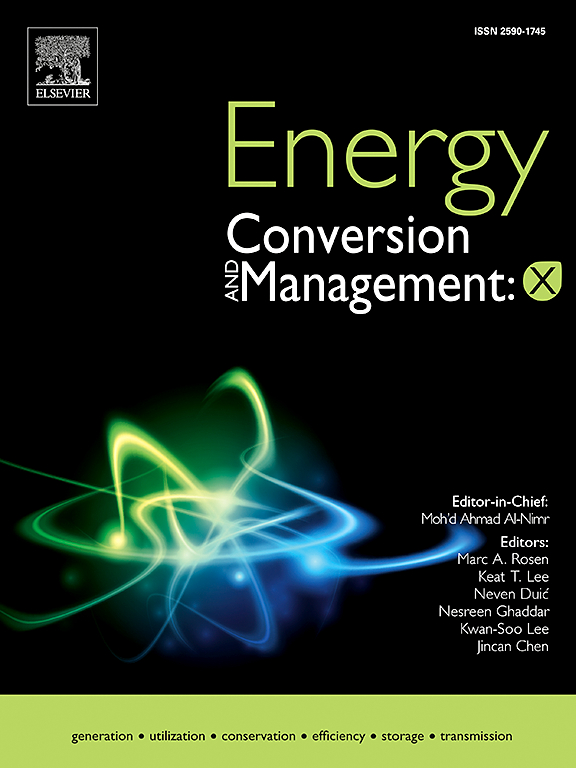针对极端热条件下不均匀加热的新型机电制动电机热管理系统的研制
IF 9.9
1区 工程技术
Q1 ENERGY & FUELS
引用次数: 0
摘要
汽车制动系统行业目前面临的挑战是开发机电制动器,需要克服摩擦热对电机性能的影响。然而,以前的研究检查电机冷却性能是在周围空气温度低于80°C的情况下进行的,同时考虑了均匀线圈的热量产生。这些假设对EMB系统无效。本研究进行了考虑极端环境温度条件和不均匀线圈热产生的实验。在实验结果的基础上,通过仿真提出了一种能够承受极端热条件的混合冷却系统。混合冷却方法,使用散热器,绝缘和相变材料是最有效的降低最大线圈温度为23 K。此外,即使在最极端的单相电机控制策略下,混合冷却也达到了137.1°C的最高温度,比基线低22.8 K。当测试衬垫摩擦系数范围为0.3至0.5时,在最极端的0.31条件下,系统的工作温度低于目标温度,最高可达139.9°C。该研究表明,对机电制动系统进行有效的热管理,保证系统的耐久性和驾驶员安全的可靠性是可以实现的。本文章由计算机程序翻译,如有差异,请以英文原文为准。
Development of a novel electro-mechanical brake motor thermal management system for nonuniform heating under extreme thermal conditions
A challenge currently faced by automotive brake systems industry is the development of electromechanical brakes that need to overcome the impact of frictional heat on the motor performance. However, previous studies that examined motor cooling performance have been conducted in surrounding air temperatures below 80°C while considering uniform coil heat generation. These assumptions are not valid for EMB systems. This study conducted experiments that considered extreme surrounding temperature conditions and nonuniform coil heat generation. Based on the results of these experiments, a hybrid cooling system that can withstand extreme thermal conditions is proposed through simulation. The Hybrid cooling method that uses heat sinks, insulation, and phase change materials is the most effective with a reduction in the maximum coil temperature of 23 K. Moreover, Hybrid cooling attained maximum temperature of 137.1°C even in the most extreme 1-phase motor control strategy, which is 22.8 K lower than the Baseline. When tested for pad friction coefficient ranges from 0.3 to 0.5, the system operated below the target temperature reaching up to 139.9°C under the most extreme 0.31 conditions. This study shows that effective thermal management of electromechanical brake systems that ensures system durability and reliability of driver safety is achievable.
求助全文
通过发布文献求助,成功后即可免费获取论文全文。
去求助
来源期刊

Energy Conversion and Management
工程技术-力学
CiteScore
19.00
自引率
11.50%
发文量
1304
审稿时长
17 days
期刊介绍:
The journal Energy Conversion and Management provides a forum for publishing original contributions and comprehensive technical review articles of interdisciplinary and original research on all important energy topics.
The topics considered include energy generation, utilization, conversion, storage, transmission, conservation, management and sustainability. These topics typically involve various types of energy such as mechanical, thermal, nuclear, chemical, electromagnetic, magnetic and electric. These energy types cover all known energy resources, including renewable resources (e.g., solar, bio, hydro, wind, geothermal and ocean energy), fossil fuels and nuclear resources.
 求助内容:
求助内容: 应助结果提醒方式:
应助结果提醒方式:


